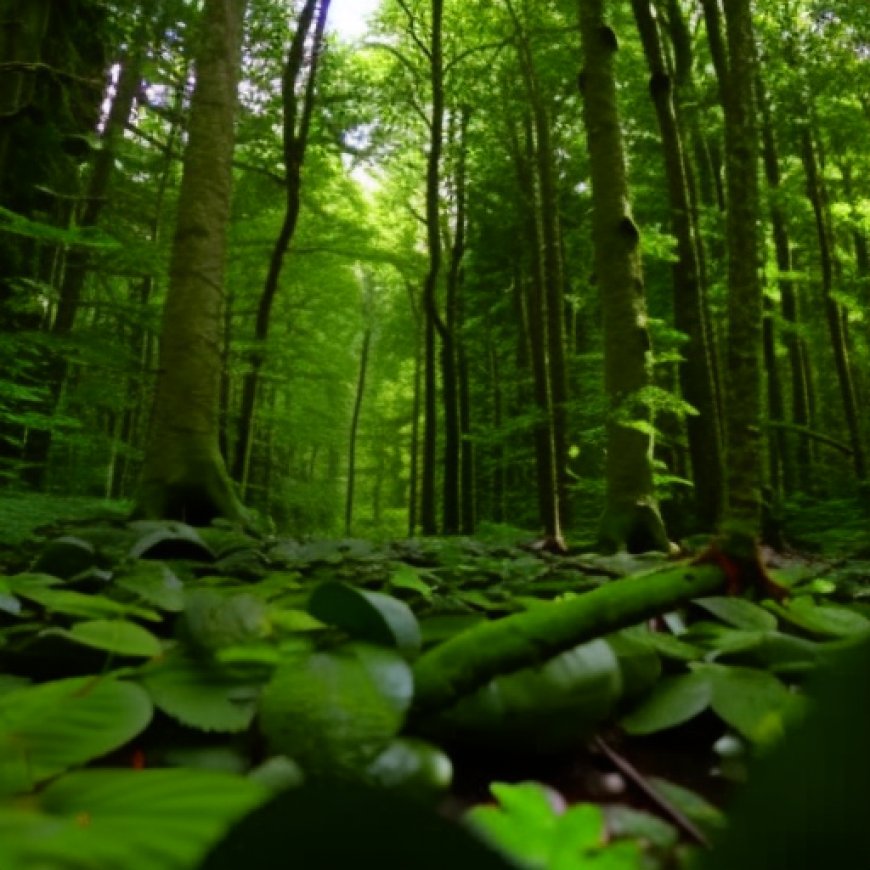Scientists Discovered the World’s Oldest Forest Hiding in England
Scientists Discovered the World's Oldest Forest Hiding in England Popular Mechanics


Oldest Forest in the World Discovered in Southwest England
Introduction
Since 2019, a fossil forest in upstate New York has been regarded as the oldest-known forest in the world. However, a new discovery in southwestern England shows that forests developed in the region 390 million years ago—some four million years earlier than the one in the U.S. While this is the oldest example of trees grouping together, they’re not the oldest trees ever, which are estimated to be 120 million years older than the first forests.
The Significance of Trees
Trees have been present on Earth for a much longer time than humans or dinosaurs. The arrival of the first forests led to a significant decrease in CO2 levels and an increase in oxygen, which contributed to the development of more complex life forms.
The Gilboa Fossil Forest
In 2009, paleobotanists discovered the starting point of the wood revolution in an abandoned quarry in Cairo, New York known as the Gilboa fossil forest. The fossilized remains of Archaeopteris, an ancient plant with a large woody root system and leaf-adorned branches, were found in rocks dating back 386 million years.
New Discovery in Southwest England
Scientists from Cambridge University have made a new discovery in the Hangman Sandstone Formation in southwest England. Fossil specimens found in this region push back the woody revolution by four million years. The study exploring this discovery was published in the Journal of the Geological Society.
Ancient Forest in England
The ancient forest found in southwest England is not as diverse as the one in Cairo, New York. It mainly consists of cladoxylopsids, which are related to ferns and horsetails. These cladoxylopsids resemble palms but are not related to them. The forest landscape represents the oldest known evidence globally for the relative position of standing trees.
Climate and Geography
The forest formed 390 million years ago during a period when England was in a different geographical location. It was part of a landmass known as Laurussia, which formed from smaller continents such as Avalonia, Baltica, and Laurentia. The climate was warmer and drier than the current climate of the British Isles.
The Oldest Trees Ever
While the discovered forest in southwest England is the oldest known forest in terms of trees growing close together, it does not represent the oldest trees ever. The first trees appeared on Earth approximately 500 million years ago. This new discovery contributes to understanding how trees transformed the planet and paved the way for the rise of life.
SDGs, Targets, and Indicators
1. Which SDGs are addressed or connected to the issues highlighted in the article?
- SDG 13: Climate Action
- SDG 15: Life on Land
The article discusses the ancient forests and their impact on the climate and the environment, which are directly related to SDG 13 and SDG 15.
2. What specific targets under those SDGs can be identified based on the article’s content?
- SDG 13.2: Integrate climate change measures into national policies, strategies, and planning.
- SDG 15.2: Promote the implementation of sustainable management of all types of forests.
The article highlights the importance of understanding ancient forests and their role in shaping the climate and environment. Achieving these targets would involve studying and integrating the knowledge gained from these ancient forests into climate change policies and strategies, as well as promoting sustainable forest management.
3. Are there any indicators mentioned or implied in the article that can be used to measure progress towards the identified targets?
Yes, there are indicators mentioned in the article that can be used to measure progress towards the identified targets:
- Discovery of new fossil specimens in different locations (e.g., upstate New York, southwestern England) indicates progress in understanding ancient forests and their impact on climate change.
- Publication of studies exploring these discoveries indicates progress in disseminating knowledge and integrating it into national policies and strategies.
These indicators demonstrate the advancement of scientific research and the dissemination of knowledge, which are essential for achieving the identified targets.
SDGs, Targets, and Indicators Table
| SDGs | Targets | Indicators |
|---|---|---|
| SDG 13: Climate Action | SDG 13.2: Integrate climate change measures into national policies, strategies, and planning. | – Discovery of new fossil specimens in different locations. – Publication of studies exploring ancient forests and their impact on climate change. |
| SDG 15: Life on Land | SDG 15.2: Promote the implementation of sustainable management of all types of forests. | – Discovery of new fossil specimens in different locations. – Publication of studies exploring ancient forests and their impact on sustainable forest management. |
Behold! This splendid article springs forth from the wellspring of knowledge, shaped by a wondrous proprietary AI technology that delved into a vast ocean of data, illuminating the path towards the Sustainable Development Goals. Remember that all rights are reserved by SDG Investors LLC, empowering us to champion progress together.
Source: popularmechanics.com

Join us, as fellow seekers of change, on a transformative journey at https://sdgtalks.ai/welcome, where you can become a member and actively contribute to shaping a brighter future.







